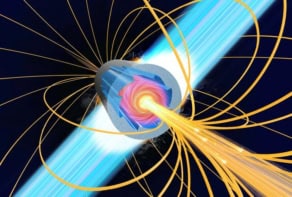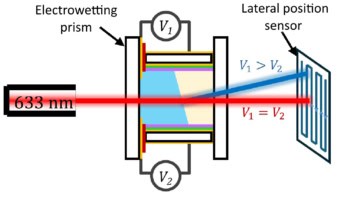Laser telemetry could hold the key to transmitting large amounts of data back to Earth, argue scientists in Australia and the US. Joss Bland-Hawthorn of the Anglo-Australian Observatory and colleagues say that switching from radio links to laser telemetry could solve an impending communication bottleneck in space (J Bland-Hawthorn et al 2002 Science 297 523).

Satellites and space stations will soon be gathering more data than they can transmit back to the Earth. If current trends continue, within five years only 0.3% of all collected data could be sent home.
“Our opinion is that in the long term, optical communications will be more efficient than radio telemetry,” said Andrew McGrath from the Anglo-Australian Observatory. “To deploy a deep space optical communications link on a 15-year timescale, the enabling technologies must be pushed for today.”
The root of the problem for radio-telemetry devices is bandwidth. Transmitting over more frequencies – that is, increasing the bandwidth – boosts the amount of information a signal can carry. But as the carrier frequency increases, atmospheric absorption becomes a problem.
With next generation spacecraft capable of collecting gigabits of information every second, the range of radio waves that penetrate the atmosphere is not enough to carry all the information home.
Lasers could be the answer. According to McGrath, more research is required to decide on ideal wavelengths and technologies. “We could take advantage of established technologies at 1300 and 1550 nm,” he says. “But shorter wavelengths offer high efficiencies in the long term.”
In November 2001, the European Space Agency established the world’s first optical data link between two orbiting satellites using a laser beam as a signal carrier. This test had a data rate of 50 megabytes per second.
The researchers claim that data transfer rates could be increased by several orders of magnitude without basic changes in principle. But this will require increased signal power, a suitable transmitter and adequate onboard memory. Well-separated mountaintop receiving stations around the globe will also be required. Six stations will guarantee cloud-free operation, says McGrath.
“Work toward a near-infrared telemetry system carries little risk and will pay for itself in the efficiency with which data can be gathered and transmitted,” the team conclude in their paper. “However, progress will only come about with the allocation of sufficient resources by NASA and ESA and the attention of the scientific community.”
At around 350m US dollars, the total cost is estimated to be comparable to that of a medium-sized space mission. Hawthorn and colleagues hope to win 10m Australian dollars to fund their research over the next five years.


